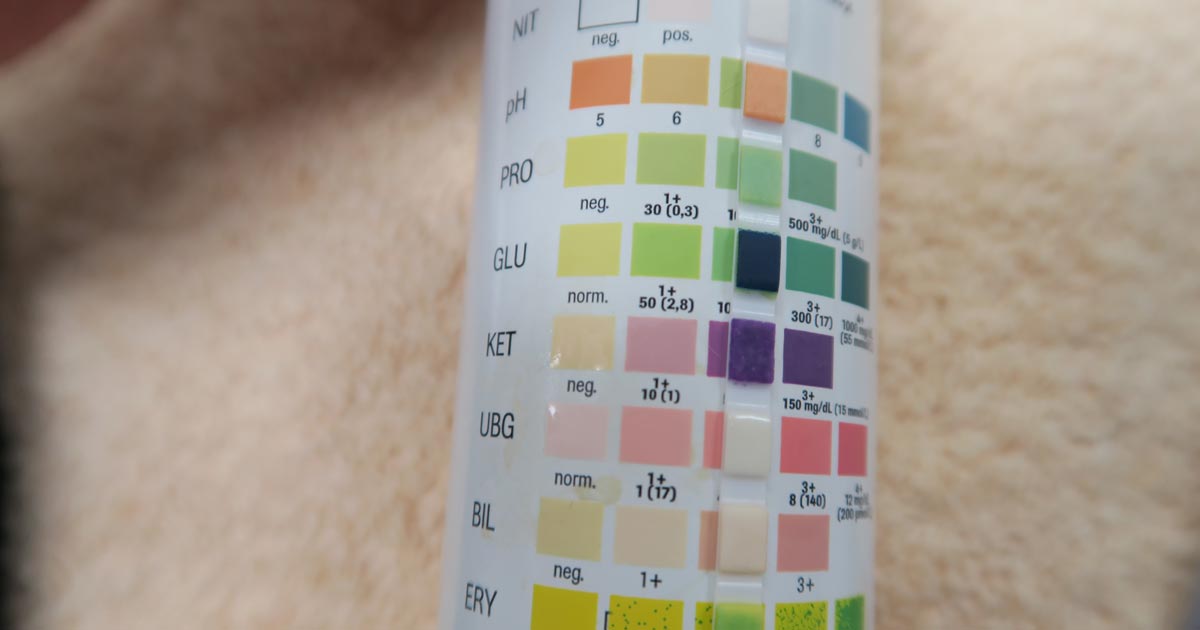Following on from July’s post entitled Urinalysis: the neglected test, let’s have a look at the dipstick – it’s a very easy part of a urinalysis and essential to perform.
Here are some of my tips in regards to using dipsticks:

- It may sound obvious, but you should always use veterinary-specific dipsticks. Human-specific dipsticks include panels for urobilinogen, nitrates and leukocytes, which we often do not interpret in small animal patients, as they are neither sensitive nor specific.
- DON’T DIP! Use a syringe and drop samples on to each square, leave for 10 seconds, then flick off the excess.
- Any amount of protein in dilute urine should raise suspicion. A reasonably large amount of protein has to be present in the urine for it to be positive on a dipstick. A urine protein to creatinine ratio may be the only way to quantify the amount of protein present, but first you must rule out evidence of inflammation or haematuria via a sediment examination.
- The ketone panel on the dipstick test is only for acetoacetate (and not beta-hydroxybutyrate), although it is extremely rare for diabetic ketoacidosis patients to not produce any acetoacetate.
- Trace blood can be a common artefact finding, especially during a cystocentesis where needle trauma can contaminate the sample with blood.
- In our feline patients, any hyperbilirubinuria is abnormal, but this may be normal in a dog depending on urine concentration.

Leave a Reply